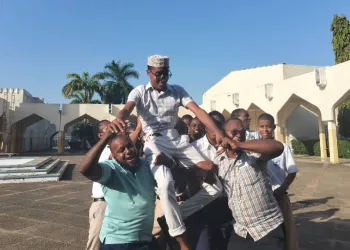Commuters in Nairobi are now experiencing a pilot run of scheduled buses and fixed fares under the first phase of the Bus Rapid Transit (BRT) trials—modeled after systems used in major European cities.
In this pilot, matatus no longer wait to fill up before departing. The Nairobi Metropolitan Area Transport Authority (NAMATA) launched the Route 111 pilot, which aims to revolutionize daily commuting. This development comes just three months after the Nairobi BRT project secured €320 million (Sh43.4 billion) in funding from international partners to support the Clean Core BRT Line 3.
Transport PS Mohamed Daghar highlighted the importance of industry collaboration in making the pilot—running between Ngong Bus Park and Pioneer Bus Station—a success. He noted the Route 111 pilot as a sign of progress in addressing commuter challenges.
Stakeholders say introducing scheduled services reduces unpredictability, while fixed fares offer consistency and affordability. Nairobi’s BRT journey received renewed momentum in January after earlier implementation hurdles. The financing from the European Investment Bank (EIB), the French Development Agency (AFD), and the EU followed prolonged talks with Nairobi County.
The initial phase includes constructing a 12-kilometre route from Dandora to Kenyatta National Hospital via Juja Road, with plans to later link Tala, Dandora, and Ngong. Separately, in September 2024, the Kenya Urban Roads Authority (KURA) announced a Sh7.3 billion BRT Line 5 project along Outer Ring Road, funded by the Korean Exim Bank and South Korean Economic Development Cooperation Fund. The 10.4-kilometre line is set to feature dedicated lanes, EV charging stations, CCTV, and enforcement systems, though it has faced criticism over exclusivity in contracting.
Nairobi’s five BRT lines, part of the city’s Integrated Urban Development Master Plan, aim to ease traffic congestion. The lines include:
-
Line 1 (Ndovu): Limuru–Kangemi–CBD–Imara Daima–Athi River–Kitengela
-
Line 2 (Simba): Rongai–Bomas–Langata Road–CBD–Ruiru–Thika–Kenol (70% complete, to be rolled out in two phases)
Line 2 will feature 13 stations and 24 platforms, with a park-and-ride facility at Kasarani, enabling drivers to switch to BRT for trips into the CBD.
















